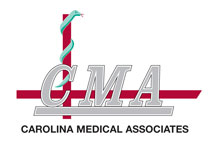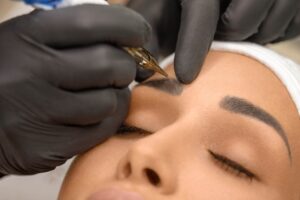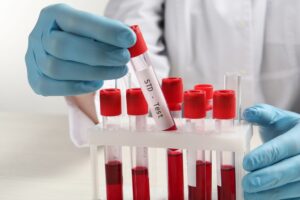If you have ever had a headache, you know how debilitating the pain can be. Many of us are familiar with how distracting and uncomfortable headaches are. However, this pain may vary from patient to patient depending on the type, triggers, and symptoms.
Keep reading to learn more about the most common types of headaches, their causes, and the treatment options available.
Common Types of Headaches
Headaches come in a variety of severities, intensities, types, and locations. The pain may be chronic or sudden, short-lived or lingering, sharp or dull. Regardless of the type, when a headache strikes, you want to find relief quickly.
Migraines
One of the most debilitating headaches is a migraine. A migraine is very strong and may be accompanied by nausea, vomiting, and/or sensitivity to light. The pain may last for hours or even days.
Migraines often develop in stages. Many patients experience an aura stage prior to the pain. The aura may include:
- Seeing wavy lines or flashing lights that aren’t actually there
- Having tunnel vision
- Having a tingling sensation or feeling of numbness on one side of the body
- Experiencing a feeling of heaviness in the arms and legs
- Hearing a ringing in the ears
- Noticing a change or sensitivity to smell, taste, or touch
The aura symptoms may start to subside or may lead right into migraine pain. The pain usually starts out dull and becomes intense and throbbing. The pain can switch sides, be localized to one area, or feel as though the whole head is affected.
The exact cause of migraines is unknown. However, being a female between the ages of 10 and 40 with a family history of migraines increases your risk of developing them. Common triggers include hormone changes, stress, certain foods, caffeine, bright lights, loud noises, and skipping meals.
Although there is no cure for migraines at this time, avoiding the triggers, making lifestyle changes, and taking certain medications may keep the symptoms from worsening.
Tension Headaches
Tension headaches are the most common, affecting an estimated 2 in 3 American adults. This mild, moderate, or severe pain may be behind the eyes or in the head and neck. Patients often describe the pain as feeling like their head is being squeezed on both sides.
Tight muscles in the back of the head and neck are thought to be the cause. Possible triggers may include driving or staring at a computer screen for long periods, temporomandibular joint disorder (TMD), and sleep problems.
There are various types of tension headaches including episodic and chronic. Depending on the type, the pain may last 30 minutes, a week, or, less rarely, up to a month. In most cases, over-the-counter pain relievers successfully treat tension headaches. For chronic sufferers, antidepressant medications have helped the pain.
Cluster Headaches
This type is classified by its severe burning or piercing pain. The pain is localized behind one eye or on one side of the face. Additional symptoms may include swelling, sweating, or flushing of the face.
True to its name, cluster headaches occur in a series with each one lasting 15 minutes to 3 hours. People may experience 1-4 episodes per day with one starting and resolving, immediately followed by a new one beginning.
Although the cause is unknown, recommended treatments include oxygen therapy, sumatriptan, and local anesthetics. Treatment plans may also include a prevention plan to avoid the pain.
Sinus Headache
Your sinuses are spaces behind your forehead, cheekbones, and the bridge of your nose. When these spaces become inflamed, they swell and make more mucus. This causes the drainage channels to become blocked. The result is a painful buildup of pressure.
A sinus headache involves constant pain in the sinus areas that is often worse with movement. Other symptoms include a runny nose, feeling of fullness in the ears, fever, and facial swelling.
Only a physician can diagnose a sinus headache that is due to an infection or blockage.
A treatment plan will target the sinus infection as well as the pain symptoms. Medications such as antibiotics, antihistamines, and/or nasal decongestants may be recommended. Taking over-the-counter pain medication, increasing your water intake, and using a nasal spray may also help.
Hypertension Headache
High blood pressure, or hypertension, often goes undetected without a monitor because symptoms are rare unless the patient’s blood pressure is dangerously high. When symptoms do occur, a headache is common.
A hypertension headache results in pain on both sides of the head. High blood pressure puts pressure on the brain causing blood to leak from the blood vessels. The result is swelling and additional pressure on the brain which causes symptoms such as headaches, dizziness, and nausea.
With treatment to lower the blood pressure, the pain, swelling, and other symptoms usually subside.
Patients who experience hypertension headaches should seek immediate medical care as there are increased risks of organ damage without treatment.
Dehydration Headache
We know the standard rule of thumb is to drink 8 glasses of water per day, but it is easy to fall short. Unfortunately, not drinking enough water can lead to dehydration which may result in head pain.
For many people, this pain may feel like a hangover or a pulsing ache. 1 in 10 people have reported experiencing a dehydration headache.
Prevention and treatment go hand-in-hand for this one. Drink more water!
Caffeine and Headaches
Caffeine has been linked to treating and causing head pain.
When someone has a typical tension headache, caffeine can be used as a quick treatment for pain relief. Caffeine helps reduce inflammation and often provides relief faster than over-the-counter medication.
On the other hand, caffeine narrows the blood vessels. When you stop consuming it, the vessels expand and cause pain. People who consume a lot of caffeine may also experience headache symptoms from withdrawal or a lack of caffeine.
COVID-19 and Headaches
Thanks to COVID-19, we now have a new type of head pain. While respiratory issues are the most common symptoms of COVID-19, neurological symptoms including head pain have been increasingly reported.
However, thus far there have not been enough studies done to emphasize the exact nature of COVID-19 headaches or the patients involved.
When to See Your Primary Doctor about Your Headaches
Although they may be painful and disruptive, headaches are usually not a reason to call a doctor. However, if you experience new or worsening symptoms, you should schedule an appointment with your primary care physician in Pineville.
Contact Carolina Medical Associates
Don’t let pain hold you back! Carolina Medical Associates offers headache treatment in Pineville, NC. If you experience chronic headaches, severe pain, or new symptoms, contact us for diagnosis and treatment options.








No Comments